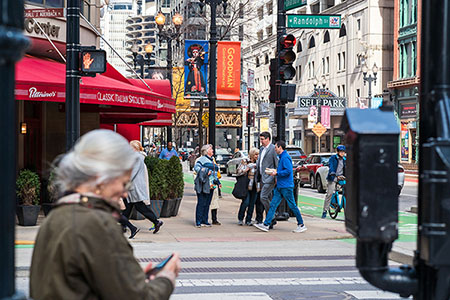
26-Aug-17 – While America protests the future of more than 700 Civil War statues and monuments sprinkled in public spaces from coast to coast, Chicago is bickering about removing an old Roman column from a pedestal outside of Soldier Field near Burnham Harbor. The problem with the 18-foot-tall, 2,000-year-old Corinthian column is it was a gift of public art to the city from fascist dictator Benito Mussolini in conjunction with the 1933 Century of Progress Exposition. 14th Ward Alderman Ed Burke and 36th Ward Alderman Gilbert Villegas want the Chicago Park District to remove the green-toned breccia stone column from its pedestal. They also want to rename Balbo Drive because it honors Italo Balbo, an Italian Air Force general who later bombed unarmed Africans in Ethiopia and helped Mussolini rise to power. The column sports an inscription that honors fascist Italy and commemorates Balbo’s celebrated transatlantic flight of 24 seaplanes from Rome to Chicago for the exposition. It originally was erected on a podium at the entrance to the Italian Pavilion and remained there long after the event ended. Later it was moved to its current landscaped spot behind a wrought iron fence on the lakefront jogging path and forgotten until former 2nd Ward Alderman Bob Fioretti tried to have it removed in 2011. Here’s hoping the Roman column will eventually end up in a museum, shipped back to Rome, or claimed by Italian-Americans as an icon on Taylor Street in the Little Italy neighborhood on the Near West Side. The question is: Once it is gone, what will the Park District place on that beautiful pedestal near Burnham Harbor? A happy ending to this story would be installation and rededication of the famed stone and brass Chicago’s Game monument on that podium to commemorate the birth of the game of 16-inch softball in Chicago. Several years ago, the handsome softball monument was removed from its original site at 31st Street and Lake Park Avenue on Chicago’s South Side and placed “in fine art storage with the City of Chicago’s Public Art Program,” according to the Department of Cultural Affairs and Special Events.
Game started with broomstick and boxing glove Historians say the Chicago game of softball was born as an indoor sport in 1887 at the Farragut Boat Club at 31st Street and Lake Park. About 20 club members were gathered in the gymnasium of the clubhouse on Thanksgiving Day to follow via telegram the progress of the annual Harvard-Yale football game. One of the young members picked up a stray boxing glove and tossed it to another member who batted the glove back. George Hancock, an inspired spectator, drew a baseball diamond on the gym floor, tied up the laces around the boxing glove to form a sphere, and the players swatted it with a broomstick. Hancock outlined a rough set of rules, and for the remainder of the evening the members played “indoor baseball.” The game caught on and by the end of the winter the Farragut team was playing indoor baseball with other clubs. By the 1920s, 16-inch softball moved outdoors. It was the perfect game to be played in alleys, compact gravel schoolyards, and parks across the Windy City. Later, 12-inch softball became popular outside of Chicago and merged with baseball. Eventually the game was played around the world using the smaller ball and gloves and mitts were allowed.
While you’re at it, rename Balbo Drive in honor of Mike Royko With the Chicago’s Game monument in a place of honor on that pedestal at Burnham Harbor, the next logical move would be to rename Balbo Drive Mike Royko Boulevard, after the Pulitzer-prize winning newspaper columnist and promoter of 16-inch softball. Today, Balbo Drive is the northern boundary of the Grant Park valley where Royko played hundreds of softball games. Along with pitching and winning many softball championships for Chicago Daily News, Chicago Sun-Times, and Royko’s Raiders in the 1970s and 1980s at Grant Park and other North Side parks, Royko wrote dozens of newspaper columns and told amusing stories about the subtleties of Chicago’s game.
|


















